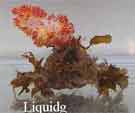Black spots on Ocelaris or Percula clown fish.
South East Queensland Marine Aquarium and Ocean activities Forum :: SEQMAOAF :: Advice on all marine aquarium issues
Page 1 of 1
 Black spots on Ocelaris or Percula clown fish.
Black spots on Ocelaris or Percula clown fish.
There are heaps of reasons an amphiprion could have marks on them, especially the orange types as in ocelaris and percula that show this more then most.
An amphiprion has a generic mucus coating capacity directed at the average range of anemones only!
This is to enable it to not be stung to any great degree while it consumes the new anemones signature mucus and synthesis this and produces its own as its mucus coating to make the anemone believe that nothing is there.
The mucus coating has three main objectives-
It is to reduce drag as they swim.
It is to house part of the fish’s immune system.
And for general protection.
It can only fail when the clown is under stress and part of that response in the reduced production of this and the natural chemicals that it makes for parasitic protection are in that mucus.
Just like our immune system if it is weakened or fails from when we are stressed or are sick!
Hyper melanization is a result of the foreign type of mucus the clown fish has consumed and is trying to synthesise that is not in its make to be able to do this.
So its pores become infected/inflamed initially and may spread out by trying to do this and will show short term scaring if it does not continue.
If it keeps expanding the fish is history.
Small marks,ick!
Large marks that may get larger,is hyper--- or damage from scratching,fisghting or sickness or ammonia burns,etc,etc.
http://www.wetwebmedia.com/DamselPIX/Clownfishes/black_patches.jpg
An amphiprion has a generic mucus coating capacity directed at the average range of anemones only!
This is to enable it to not be stung to any great degree while it consumes the new anemones signature mucus and synthesis this and produces its own as its mucus coating to make the anemone believe that nothing is there.
The mucus coating has three main objectives-
It is to reduce drag as they swim.
It is to house part of the fish’s immune system.
And for general protection.
It can only fail when the clown is under stress and part of that response in the reduced production of this and the natural chemicals that it makes for parasitic protection are in that mucus.
Just like our immune system if it is weakened or fails from when we are stressed or are sick!
Hyper melanization is a result of the foreign type of mucus the clown fish has consumed and is trying to synthesise that is not in its make to be able to do this.
So its pores become infected/inflamed initially and may spread out by trying to do this and will show short term scaring if it does not continue.
If it keeps expanding the fish is history.
Small marks,ick!
Large marks that may get larger,is hyper--- or damage from scratching,fisghting or sickness or ammonia burns,etc,etc.
http://www.wetwebmedia.com/DamselPIX/Clownfishes/black_patches.jpg
_________________
Forum Admin

liquidg- Posts : 2782
Join date : 2010-02-02
Location : Brisbane bayside
 Similar topics
Similar topics» Clown fish and shrimp, variation in size and why, also why do clown fish wobble?
» Clown fish-amphirpions becoming a pair.
» mealnopus and latezonatus juvenile clowns caught for the show settling in.
» The Mccullochi clown fish, how did it come to be?
» Amphiprion Latezonatus clown fish
» Clown fish-amphirpions becoming a pair.
» mealnopus and latezonatus juvenile clowns caught for the show settling in.
» The Mccullochi clown fish, how did it come to be?
» Amphiprion Latezonatus clown fish
South East Queensland Marine Aquarium and Ocean activities Forum :: SEQMAOAF :: Advice on all marine aquarium issues
Page 1 of 1
Permissions in this forum:
You cannot reply to topics in this forum
 Home
Home